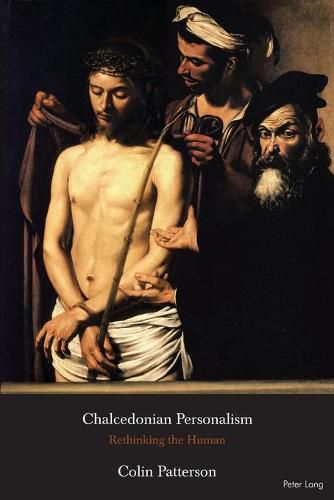Readings Newsletter
Become a Readings Member to make your shopping experience even easier.
Sign in or sign up for free!
You’re not far away from qualifying for FREE standard shipping within Australia
You’ve qualified for FREE standard shipping within Australia
The cart is loading…






This title is printed to order. This book may have been self-published. If so, we cannot guarantee the quality of the content. In the main most books will have gone through the editing process however some may not. We therefore suggest that you be aware of this before ordering this book. If in doubt check either the author or publisher’s details as we are unable to accept any returns unless they are faulty. Please contact us if you have any questions.
We all have a sense of what it means to be a person, but how do we conceptualize that intuition? What is the connection between a person and their human nature? Where does mind fit in to the picture? This book draws upon the work of Joseph Ratzinger and Hans Urs von Balthasar, both of whom developed a perspective on these questions that is grounded in the early Church’s teaching on Christ and the Trinity. The possibilities of that teaching for understanding human personhood were generally lost for about fifteen centuries, but Ratzinger, in a bold assertion, believes that its retrieval has the power to challenge and reshape the whole of human thought. The first part of the book offers an account of how von Balthasar and Ratzinger arrived at their theological understanding of personhood, paying particular attention to nineteenth- and early twentieth-century personalist thought. The second part draws out a number of the implications of this work and, in doing so, makes use of recent psychological theory. Finally, as a means of bringing into the picture the related philosophical notions of self, freedom and the soul, the book introduces and explores the concept of a semblant .
$9.00 standard shipping within Australia
FREE standard shipping within Australia for orders over $100.00
Express & International shipping calculated at checkout
This title is printed to order. This book may have been self-published. If so, we cannot guarantee the quality of the content. In the main most books will have gone through the editing process however some may not. We therefore suggest that you be aware of this before ordering this book. If in doubt check either the author or publisher’s details as we are unable to accept any returns unless they are faulty. Please contact us if you have any questions.
We all have a sense of what it means to be a person, but how do we conceptualize that intuition? What is the connection between a person and their human nature? Where does mind fit in to the picture? This book draws upon the work of Joseph Ratzinger and Hans Urs von Balthasar, both of whom developed a perspective on these questions that is grounded in the early Church’s teaching on Christ and the Trinity. The possibilities of that teaching for understanding human personhood were generally lost for about fifteen centuries, but Ratzinger, in a bold assertion, believes that its retrieval has the power to challenge and reshape the whole of human thought. The first part of the book offers an account of how von Balthasar and Ratzinger arrived at their theological understanding of personhood, paying particular attention to nineteenth- and early twentieth-century personalist thought. The second part draws out a number of the implications of this work and, in doing so, makes use of recent psychological theory. Finally, as a means of bringing into the picture the related philosophical notions of self, freedom and the soul, the book introduces and explores the concept of a semblant .